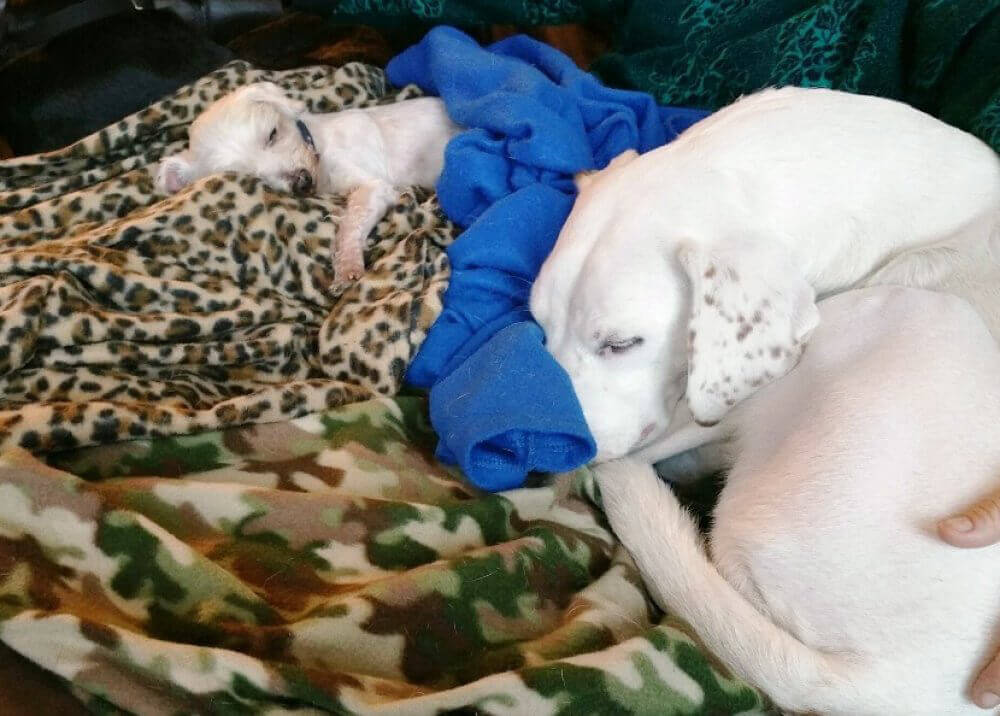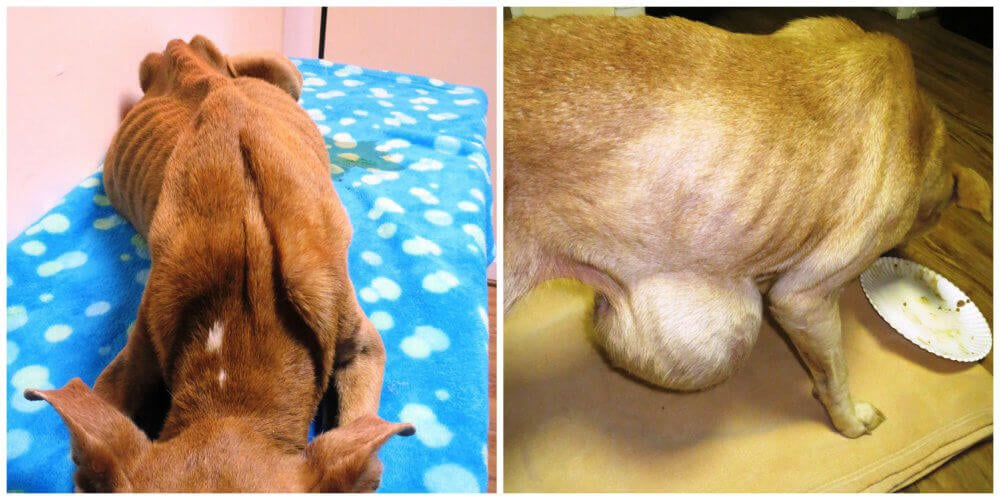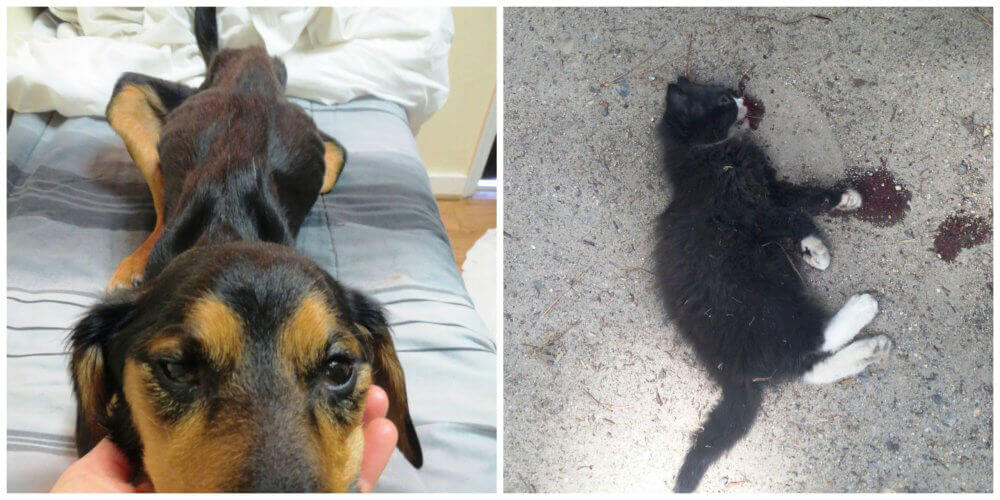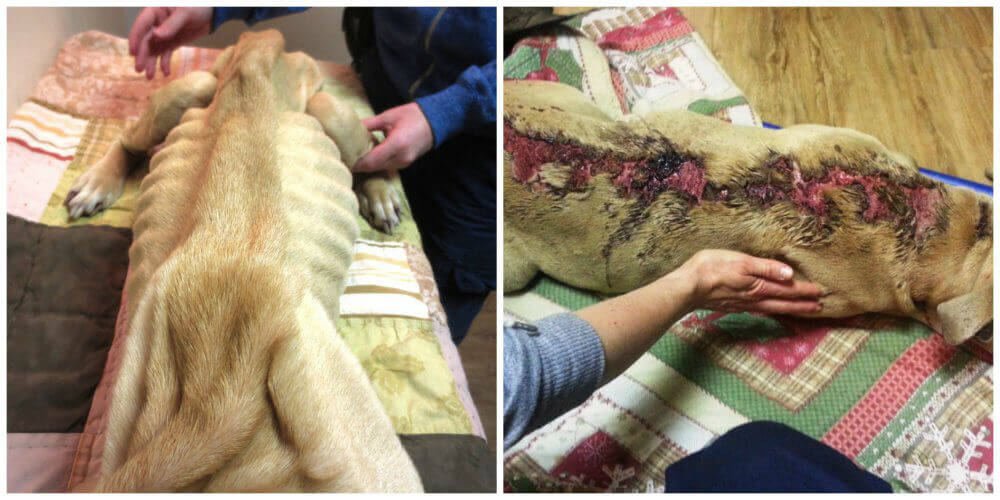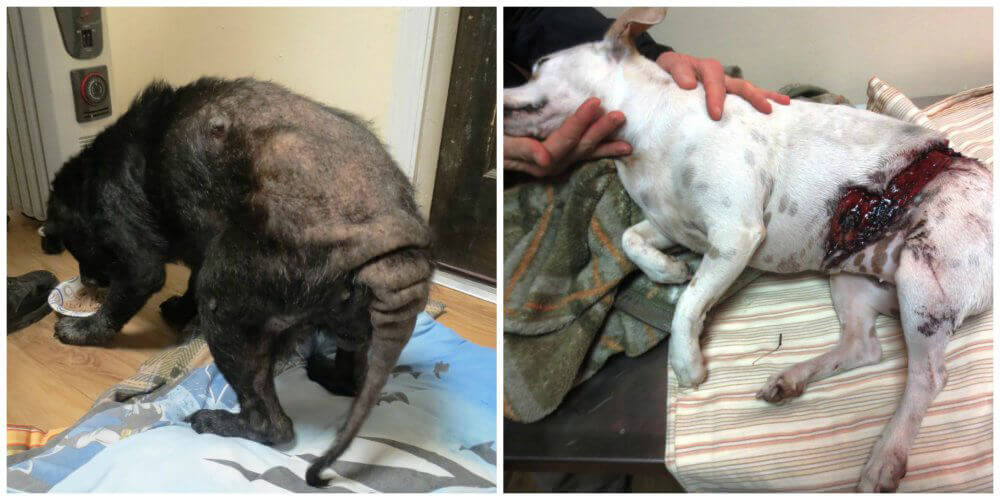Helping Animals Isn’t as Simple as a ‘Save Rate’ (Graphic)
On Christmas Eve, PETA took in a tiny 11-year-old dog named Star, whose humans had abandoned her because they were expecting a baby. Her pitiful appearance chronicled a lifetime of neglect: Her teeth were rotting, her gums were infected, she had an ear infection, and she had been diagnosed with kidney disease. She was famished, filthy, and covered with fleas, and her fur was painfully matted.
A PETA staffer took Star home and is caring for her, showing her love and respect during the time she has left. After a bath, grooming, lots of TLC, and veterinary care—including dental work, during which all but three of Star’s teeth had to be pulled—Star now spends her days as an “assistant” at PETA’s office and her nights snuggling on the couch with her rescued canine “siblings,” Douglas and Ideal, and being showered with affection.
Many shelters refuse to take in animals like Star because people aren’t exactly lining up to adopt ailing senior dogs. Concerned primarily with maintaining appealing “save rates,” these facilities pick and choose which animals they admit based on the animals’ likelihood of being adopted, rather than on their needs. When this happens, animals just like Star pay the price.
Consider this scenario, paraphrased from the Michigan Humane Society: Shelter 1 accepts only cute, young, friendly animals who will quickly be adopted, leaving the rest to take their chances on the streets or with people who don’t want them. Shelter 2 accepts every animal who comes through its doors—including old, aggressive, sick, and injured ones.
Because Shelter 1 accepts only animals who are easy to place, 96 percent of the animals it takes in are considered “adoptable,” and all of them find homes. Meanwhile, Shelter 2 receives a larger number of animals, many of whom are ill or severely injured (including some who were rejected by Shelter 1). So only 57 percent of the animals at Shelter 2 are considered healthy or treatable, and all these animals are adopted as well.
Both of these shelters have found homes for all the adoptable animals. But Shelter 1 can claim a 96 percent “save rate,” while Shelter 2 has only a 57 percent “save rate.” So which shelter helped more animals? Which left more animals to take their chances on the streets?
And then there’s Shelter 3: PETA’s shelter, which is located in Norfolk, Virginia. It’s the polar opposite of Shelter 1, accepting almost no adoptable animals—referring or transferring them instead to local open-admission shelters, where they’ll have the best chance of being seen by prospective adopters and then adopted. This allows us to keep our doors open to the most desperate cases—animals who require euthanasia, often immediately, to end their suffering.
A cat named Boots was one of those animals. One of our fieldworkers responded to a call from Boots’ owner and found the cat outdoors in the freezing cold, inside a dark plastic storage tub that had bricks placed on top of it—apparently to keep him inside, even though he was so weak that he could barely move. When the fieldworker took Boots out of the tub, he lay his head on her chest because he was too frail to hold it up. Our fieldworker hand-fed him, made him as comfortable as possible for transport with extra cushions and blankets, and rushed him to PETA’s headquarters. At the building, after she had cuddled with the suffering cat for a few moments, we gave him a merciful and dignified exit from a world far too short on kindness.
Boots is just one of the thousands of animals our fieldworkers helped in 2014. Please watch this video to see more of their stories:
We welcome all the animals that “no-kill” shelters shun: the elderly, aggressive, desperately ill, and injured as well as those who have spent their entire lives chained, aren’t housetrained or socialized, and aren’t suitable candidates for adoption.
Our doors are also open to animals who would otherwise face terrifying and sometimes even painful deaths at remote, rural “dog pounds” that don’t handle or euthanize animals humanely, and we’re honored to lighten the load of local open-admission shelters that are inundated with animals or prohibited from accepting animals outside their jurisdictions. Since PETA is independent, we can operate this unique “shelter of last resort” and offer a public service to animals who need and deserve a respectful, peaceful, and painless end and whose guardians can’t afford the cost of euthanasia at a veterinarian’s office.
Animals aren’t numbers—they’re individuals whose situations are as unique as Star’s and Boots’, and they deserve to have their best interests considered. We invite everyone to join us in our efforts to prevent animal homelessness, suffering, and euthanasia. Please, always spay or neuter your animal companions, adopt them from shelters, and support shelters that put animals—not statistics—first.


